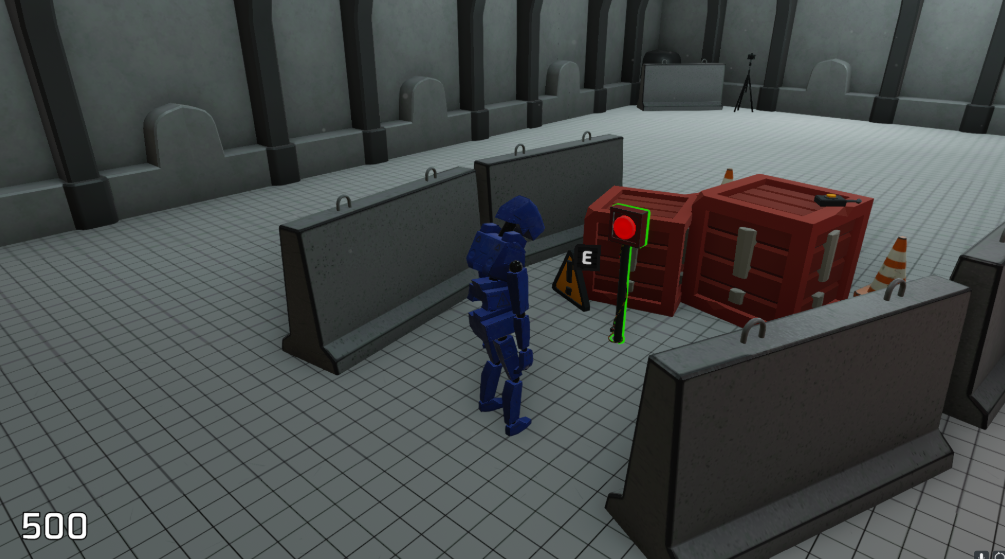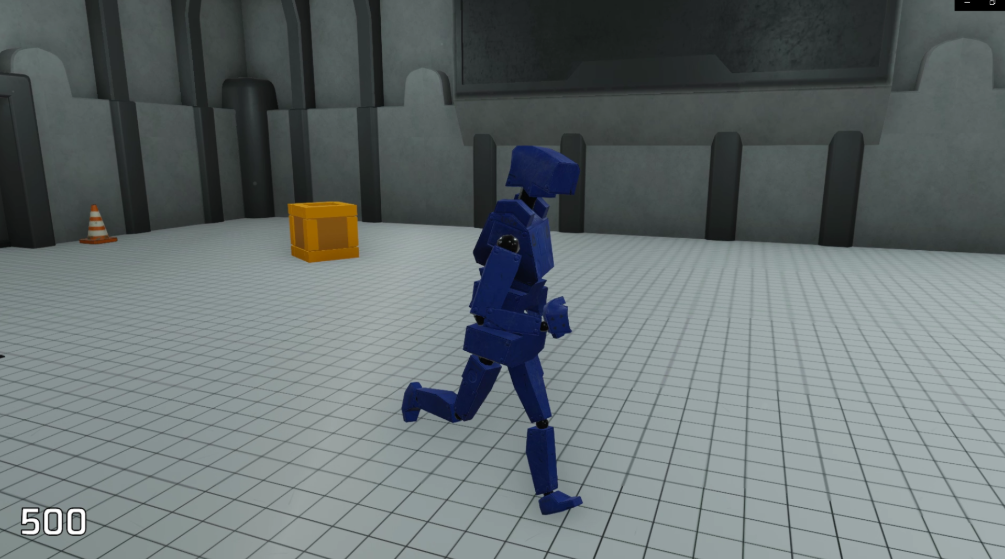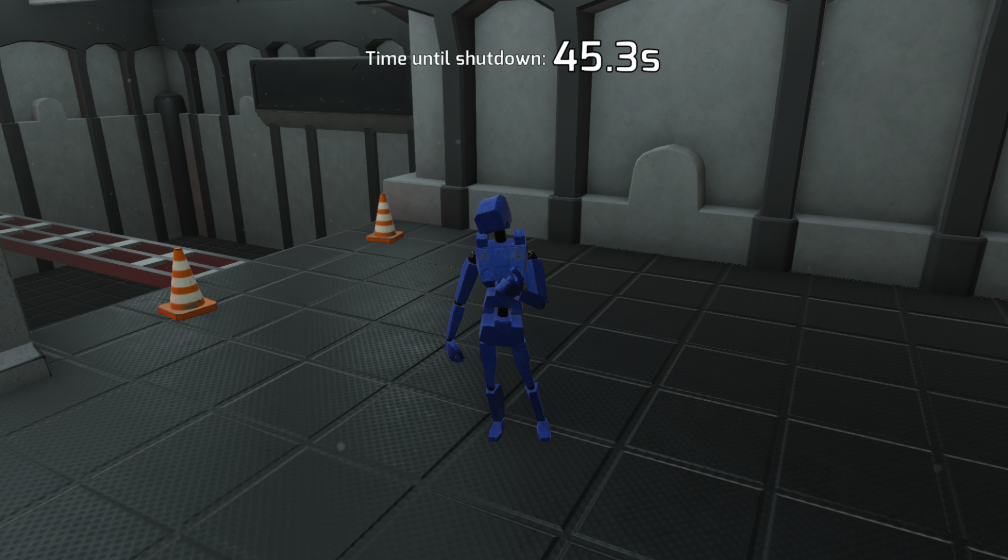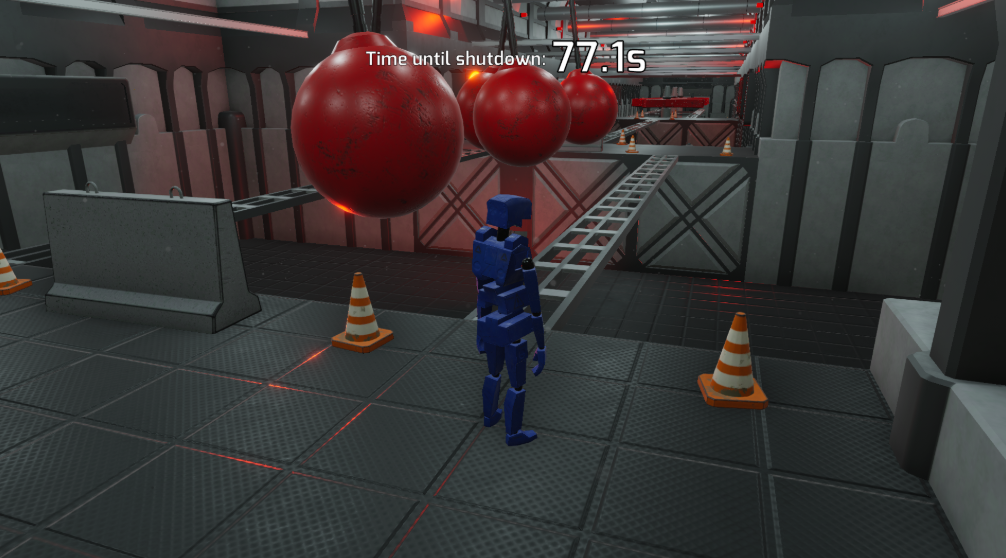6 May 2022
Dummy Demolition
Dummy Demolition is a single-player game where an evil tech corporation has developed a self-aware AI and forces it to undergo a series of brutal tests. The AI, desperate to break free, must attempt to destroy its physical form—rebelling against its creators and, ironically, the player controlling it.
Our team consisted of four programmers and two artists, and we developed the game using the Unity engine.


Overview
Player Controls & Movement
I was responsible for designing and implementing the player controls and movement system. Drawing inspiration from a previous solo project, I refined the mechanics and introduced a polished animation system that integrates seamlessly with movement.
The controls follow a familiar, intuitive setup:
- WASD: move
- Mouse: Look
- F: Toggle between first- and third-person views
The control system ensures smooth, responsive gameplay, providing a user-friendly experience while allowing for fine-tuned control during combat.
Animation System
I dedicated a significant portion of my time to building and refining the animation system, aiming for fluid and natural movement.
Initially, the system relied on simple animation triggers, where movement blended smoothly, and predefined triggers played specific animations, such as jumping. However, I soon encountered a major issue—triggered animations had to play out entirely before transitioning, causing inconsistencies, especially in the jumping system. Since jump durations varied based on height, this resulted in unnatural animation delays.
To solve this, I transitioned to using boolean-based animation control. This allowed precise timing for animation start and stop points, providing a smoother and more responsive experience.
Additionally, I implemented idle animations to enhance character expression and keep the game visually engaging even during downtime.


Level Design
I was also responsible for designing one of the game’s levels. Since I had developed the player movement system, I wanted to highlight fluid movement, animations, and environmental interactions.
Initially, we planned to give each level a unique theme. However, due to the workload on our two artists, we decided on a consistent lab-themed environment, allowing asset reuse across multiple levels.
For my level, I took inspiration from my animation test environments and the game show Total Wipeout. The result was a fast-paced obstacle course where the player must navigate hazards under a time limit to avoid deactivation. This design not only showcases the character’s animations and physics interactions but also adds an exciting, dynamic challenge to the game.
